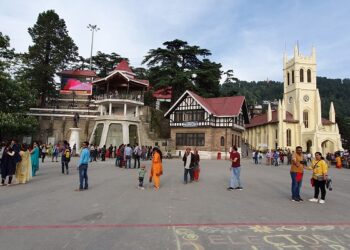The Shimla Water Catchment Wildlife Sanctuary has a long history of conservation and is considered one of the densest forests in Asia. It has been preserved for more than 135 years. The trek is quite easy and relaxing as you will be walking on a rough, narrow road. This path is level, with almost no inclines or declines. The sanctuary boasts a vast variety of trees such as Ban-Oak, Moru-Oak, Kharsu-Oak, Kail, Spruce, Silver Fir, Rhododendron, Chir, and Himalayan Cedar.
The sanctuary offers fantastic opportunities for wildlife tourism. It presents breathtaking sights for nature lovers, with high potential for sighting various animals and birds. Ghoral, barking deer, langur, porcupine, and common leopard roam freely in this sanctuary. If you’re fortunate, you might also see speckled wood-pigeons, Himalayan woodpeckers, yellow-billed magpies, and Koklass pheasants.
After an approximate two-hour walk, you will reach Seog, located 7 kilometers from the entry gate. There stands a water tank with a capacity of roughly 5 million gallons, constructed by the British in 1901. Even though it is no longer in use, you can still admire the British engineering from that era.
From this point, trek uphill on a narrow trail for roughly 10 to 15 minutes to reach the Seog Guest House, which was originally built in 1901 but has recently been renovated. While on your way, pay a visit to a small card room that was built for the amusement of the British during the same time period. When you reach the guest house, enjoy your packed lunch, accompanied by the sounds of the jungle.
After lunch, start descending until we intersect with the main road to commence our journey back.

Founded in 2016, The Traveller Trails is a print and digital magazine and a trusted source for current news, trends, analysis, opinions, interesting blogs, videos and exclusive interviews from every corner of the world.







